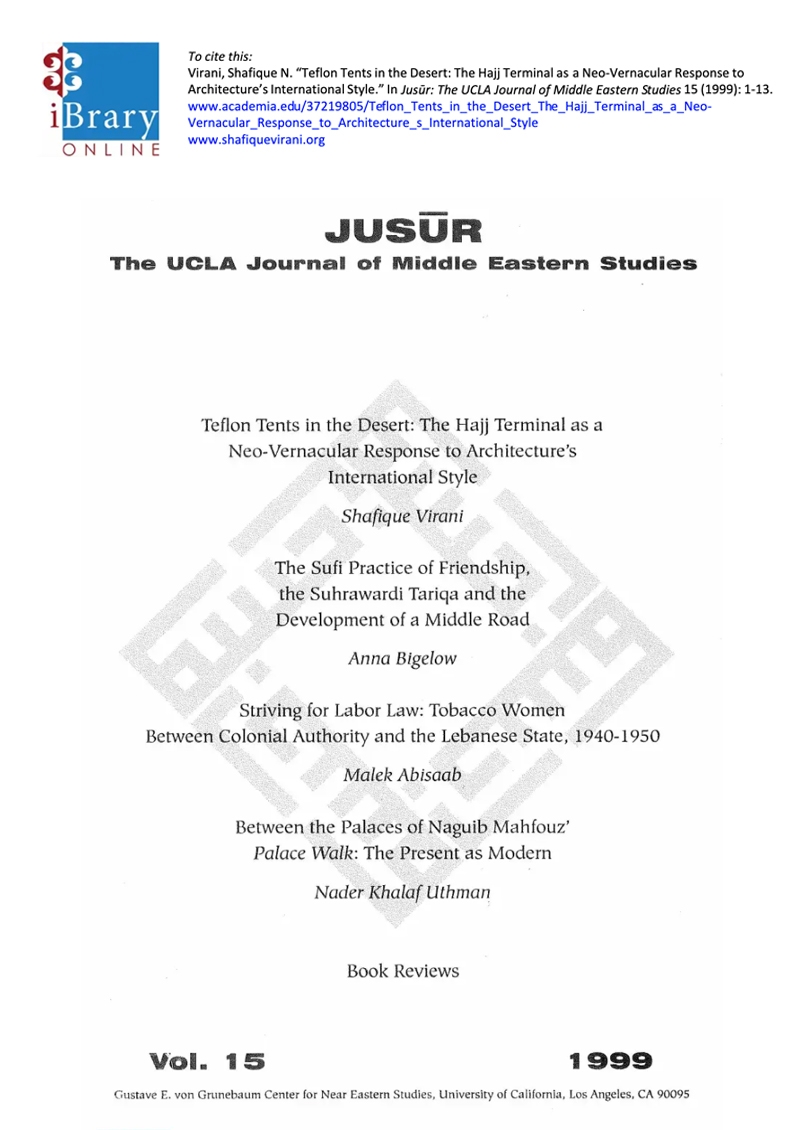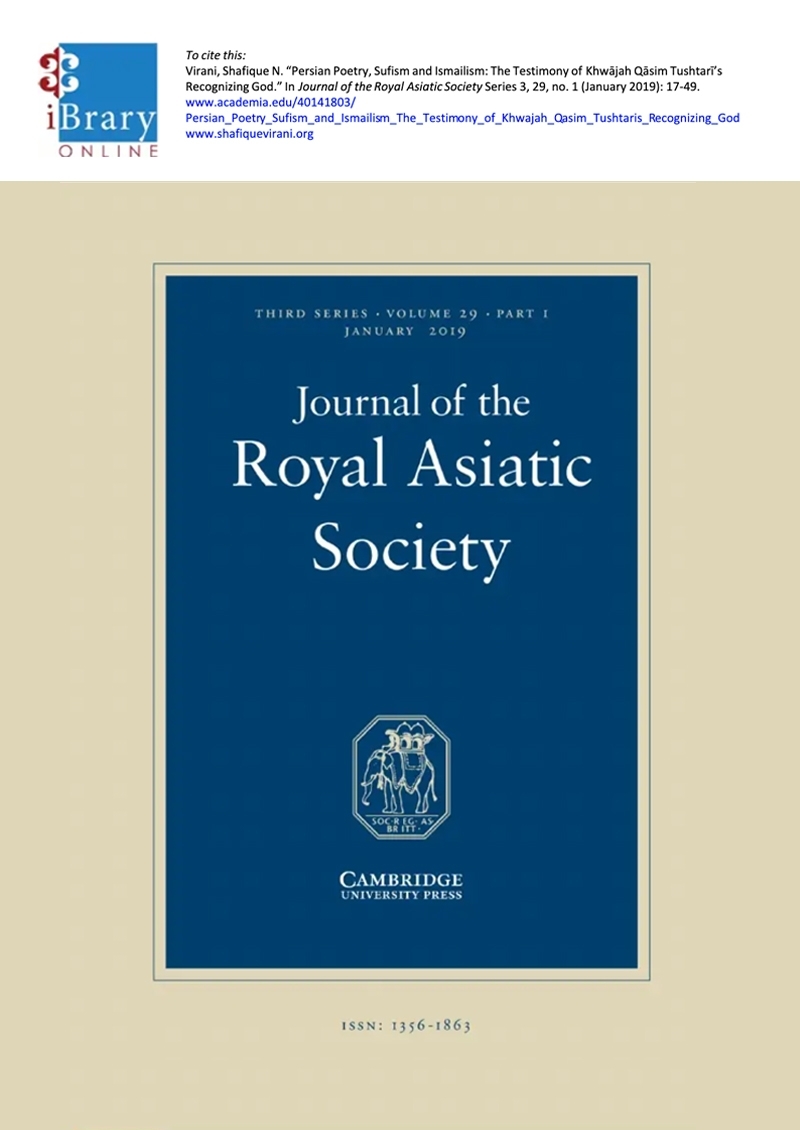Publication – English
Teflon Tents in the Desert: The Hajj Terminal as a Neo-Vernacular Response to Architecture’s International Style
Jusūr: The UCLA Journal of Middle Eastern Studies, 1999
Abstract:
In the early 1960s, the Saudi Ministry of Defense and Aviation began planning for an air terminal that was urgently required to accommodate the hundreds of thousands of Hajj pilgrims that arrived yearly. Approximately five hundred thousand pilgrims were expected to arrive in 1975, and that number was certain to increase exponentially over the years. The creation of a suitable facility was thus an absolute necessity. This article investigates how designers successfully addressed the issue of creating such a mammoth terminal without adopting the International Style of architecture, then virtually ubiquitous. It begins by outlining the development of the International Style and mentions the concerns of its critics. It then examines how the developers of the Hajj Terminal addressed these concerns by adopting a neo-Vernacular approach to create a stunningly beautiful edifice which, while reflecting traditional vernacular precedents in its tent-shaped design, was also to become the world’s most immense fabric structure enclosing the world’s largest covered space. Today, the Hajj Terminal encompasses an area greater than the international airports of New York, Chicago and Paris combined. Approximately two million pilgrims pass through the terminal every year, making it the center of the biggest airlift in the world during the pilgrimage season.
Cite this publication:
Virani, Shafique N. “Teflon Tents in the Desert: The Hajj Terminal as a Neo-Vernacular Response toArchitecture’s International Style.” In Jusūr: The UCLA Journal of Middle Eastern Studies 15 (1999): 1-13.
Share what you’re reading on social media
If you liked this, you may also enjoy reading




